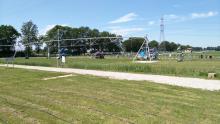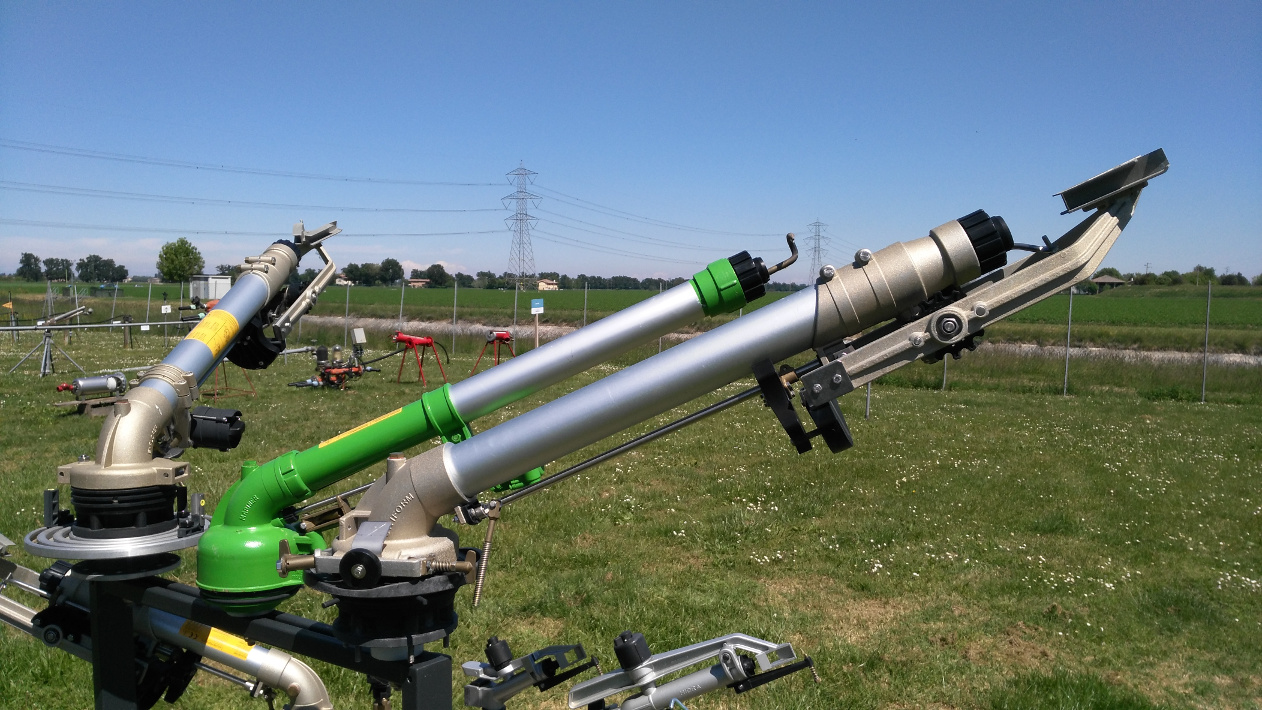
Irrinet/Irriframe, along with Acquacampus, is an interesting experience in Italy for optimising irrigation.
The increasing development of intensive agriculture and water demanding crops implies an increasing demand of water for food that threats the sustainability of water use at several spatial and temporal scales. Climate changes further exacerbate the problem therefore posing relevant challenges for ensuring sustainability. The above situation calls for innovative methods to ensure that irrigation requirements are efficiently and satisfactorily met.
It is generally agreed that the efficient and effective use of water in irrigation systems is of critical importance for sustainable agricultural development, food security and overall economic growth. This is particularly true in light of global population increase, climate change and the competing demand for water from other economic sectors. To this end, smart irrigation is a relevant opportunity to improve irrigation systems for the purpose of maximizing crop production while ensuring an efficient and optimal use of water. We define smart irrigation as a set of techniques to deliver water to crop with the correct amount, at the right time with minimal water losses. While it is unanimously recognized that smart irrigation is a key requirement for sustainable agriculture to organize it at regional level is still a challenge.
Irrinet/Irriframe, with Acquacampus, is a service to water managers and farmers to maximize the efficiency of irrigation networks. It processes information from a specific irrigation system to suggest innovative solutions to save water. Irrinet/Irriframe addresses the challenge of introducing smart and precise irrigation in areas where typical and controlled-origin-denomination products are produced. The challenge is the improvement of irrigation efficiency, through the use of advanced techniques, while preserving the quantity and behaviors of agricultural production. Irrinet/Irriframe-Acquacampus also addresses the problem of transferring knowledge to farmers and stakeholders in general. In detail, Irrinet/Irriframe-Acquacampus is composed by:
- The Irriframe service (previously called Irrinet, see https://www.irriframe.it/Irriframe): a web-based system to estimate the amount of water that should be delivered to a specific crop depending on soil type, geographic location, irrigation features, meteorological data, groundwater data and data from satellite images and drones – the latter is used for precise irrigation systems. Irriframe is also available through a smart-phone application.
- The Acquacampus service (see http://www.consorziocer.it/it/p/acquacampus/): an experimental site to test the efficiency of several precise irrigation techniques in order to provide technical advice to farmers. The information elaborated in Acquacampus is also available through a website.
- Creating a structure for scientific and technical dissemination with an excellent profile at the national and international level;
- Conceive, create and manage an innovative communication project to provide relevant information to students, technicians, farmers and public administrations.
Acquacampus can be visited by stakeholders and the public during open days and opening hours, to see advanced irrigation techniques operating in practice. The main purpose of Acquacampus is to educate stakeholders, farmers and students to precise irrigation. Acquacampus is an original experience to develop technical guidelines for precise irrigation and spread the information to stakeholders.
The Irriframe service, after having been tested in the Emilia-Romagna region in Italy, has been extended to several other regions. It is currently used by 74 land reclamation Bureaus, for a total of about 16.000 users; it covers a land area of 168.000 hectares; the water saving allowed by Irriframe is estimated in about 350.000.000 m3/year. Acquacampus is currently being tested in a field site in the Emilia-Romagna region in Italy. The impact of Irriframe-Acquacampus is very significant. Being used by several land reclamation Bureaus, Irriframe-Acquacampus is a very successful experience in Italy, where it changed the irrigation practices towards a more efficient and sustainable management.
Irrinet/Irriframe is illustrated in this short video.
More details on Irrinet/Irriframe are given here below.What is Irrinet/Irriframe?
Irrinet/Irriframe is an IT Irrigation Advisory Services for Farm Water Management. Irrinet/Irriframe is an interactive service support to irrigation.
Irrinet/Irriframe is a big data generator in Farm Water Management.
Irrinet/Irriframe: double name since the original name was Irrinet; Irriframe identifies the application at national level in Italy. Irrinet/Irriframe covers an overall surface of 71.265 km2, with 74 land reclamation bureaus involved.
Irrinet/Irriframe was developed by Consorzio CER, IT.
IRRINET/IRRIFRAME IRRIGATION MODEL
The irrigation model is based on a daily soil/plant/atmosphere water balance. The irrigation model uses up-to-date input data (i.e. when users ask for information, the latest data are taken into account). The water balance model identifies optimal management strategies for crop irrigation at a field scale. 50 crops are considered.
Input data
|
From Farmers |
From Regional Agencies/Services/Databases |
|
|
Deterministic water balance model
|
Model sub-group |
Model output |
|
Water dynamics in soil: 3 layers are considered (surface, rooted, bottom layers), using a reservoir model (i.e. water storage exceedance) |
Effective infiltration based on rainfall and soil characteristics |
|
Crop growth |
Root development Crop phenology |
|
Crop water requirements |
Water stress, based on evapotranspiration data Water volume needed at daily scale in the root zone |
|
Water table contribution |
Groundwater inflow (capillary rise) |
Economic profitability
An economic algorithm provides a real-time assessment of the profitability of the irrigation supply (i.e. save more water without reducing crop yields and negatively affecting farmers’ gain)
Output data
-
Crop water balance on a daily basis (real-time) –i.e. crop evapotranspiration and cumulated water deficit
-
Daily irrigation volume – provided 20 days in advance
-
Ideal irrigation timing – provided 20 days in advance
-
Irrigation plots
-
Economic profitability, displayed as a traffic light: economically advantageous; uncertain/not evaluable economic advantage economically disadvantageous.
IRRINET/IRRIFRAME WEB APPLICATION
IRRIFRAME VOICE: web application providing crop water needs to farmers (end-users). Available for free.
New functionalities: users can upload their own data (e.g. soil moisture measurements) thus improving water balance calculations. Info on economic convenience – economic cost of each single irrigation
Irrinet/Irriframe visibility in EU
Irrinet/Irriframe is cited among EIP Water Innovations.
IRRINET/IRRIFRAME IN NUMBERS (2017 update)
|
|
ITALY |
|
|
Land Reclamation Bureau |
74 |
|
|
Users1 |
16.000 |
>10.000 |
|
Land Area |
168.000 hectare |
113.000 hectare |
|
Irrinet/Irriframe output requests |
33.000 |
|
|
Water saved each year (without affecting crop yield) |
350.000.000 m3 |
|
|
Costs saved each year (based on annual operation costs) |
50-70 €/hectare |
50-70 euros/hectare |
|
Irrinet/Irriframe cost |
0.015 €/hectare |
0.015 €/hectare |
|
Key crops involved |
|
MAIZE (16%) VINE (9%) SUGAR BEET (7.5%) |

The Acquacampus test site
- 81 views
